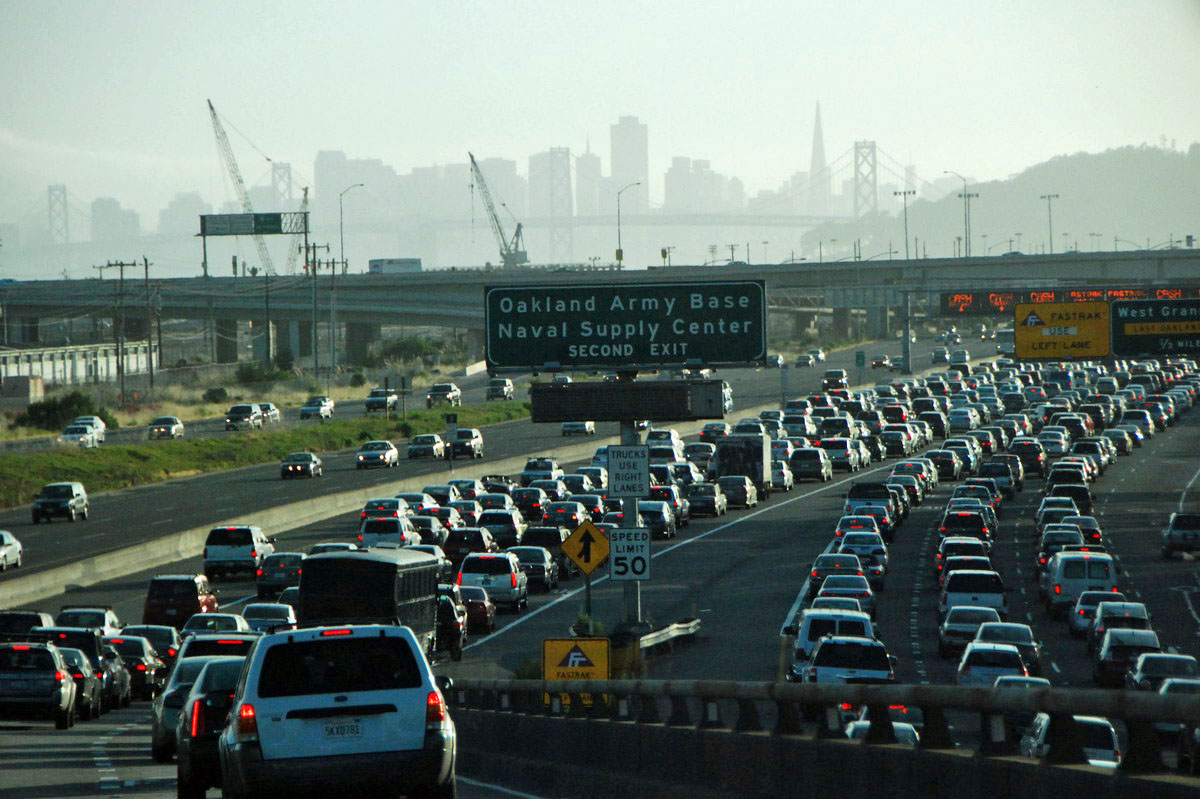
Agreeing on a new way to measure transportation impacts -- and not just delays for drivers -- is no simple task for California's planning policymakers.

The Governor’s Office of Planning and Research (OPR) is fine-tuning its proposal to replace Level of Service, the metric recently ditched by the state which focused exclusively on car delays, by creating a new metric called Vehicle Miles Traveled (VMT), which measures how much driving is expected to be generated by a new development. Basically, when development and transportation projects are analyzed under the California Environmental Quality Act, they must no longer be judged solely on how many seconds of delay they cause drivers.
OPR has held a series of workshops and a webinar to explain the issues to city planners and other interested parties, but some public commentary shows that confusion and uncertainty reign.
Responses to the proposal so far have ranged from supportive to vehemently critical, but the harshest criticisms include inaccuracies about the intent of SB 743, the legislation mandating the LOS/VMT change.
OPR has extended its deadline for public comments about its Preliminary Discussion Draft of CEQA Guidelines [PDF] until November 21. Comments can be submitted by email.
In August, OPR released its proposal to replace LOS with VMT, following last year's adoption of SB 743, which mandated the change. VMT looks at the entire lengths of car trips a project might generate -- not just the number of vehicles making their way through an intersection. It gives a more accurate assessment of the environmental impact of travel induced by a project. Planners also say it's easier to model VMT than to measure LOS, since the models involve fewer complicated assumptions they tend to be more accurate. Many jurisdictions already measure vehicle miles traveled as part of their efforts to reduce greenhouse gas emissions.
In a recent webinar [WMV], senior OPR staff members Chris Calfee and Chris Ganson explained some of the problems that have arisen as a result of using Level of Service to measure environmental impacts.
While the change from LOS to VMT has been met with praise online and from more progressive planners, officials from local jurisdictions and agencies say they're worried about it increasing work loads and what it means for projects already in the planning process. Questions raised by webinar participants focused on potential conflicts with existing local plans, many of which still require some LOS analysis.
SB 743 makes it clear that LOS is no longer to be considered an environmental impact under CEQA. But that doesn't mean it can't still be used for other means, such as local congestion management or exacting development impact fees.
“Cities have the power to require projects to follow local general plans," said Calfee. "Mitigation can still happen as result of the planning process, but it won't necessarily be in the CEQA context.”
In addition, said Calfee, local agencies can use their own professional judgement when choosing tools and models for measuring transportation impacts. But OPR’s assertions are not putting everyone at ease.
One review of the proposed rules, authored by a law firm whose clients include developers and which has been quoted in at least one comment letter submitted to OPR [PDF], includes misstatements about the statute and the proposed guidelines.
The letter, authored by the Regional Economic Association Leaders of California, states that the proposal for VMT guidelines "inexplicably fails to incorporate the parts of SB 743 that are designed to streamline CEQA for some infill projects in some locations (e.g., eliminating aesthetics, parking, and automobile delay as CEQA impacts for such projects)."
But the guidelines are required to address only the part of SB 743 that requires a replacement metric for Level of Service. The other components of the law the letter pointed out have already gone into effect.
Both the online post and the comment letter also objected to the proposal's list of "radical" mitigation measures suggested for projects that don't meet VMT thresholds.
The suggested mitigation measures, which were taken from the California Air Pollution Control Officers Association’s guide titled "Quantifying Greenhouse Gas Mitigation Measures" [PDF], have been shown to reduce vehicle miles traveled. They include affordable housing in transit-oriented developments, balancing the jobs-to-housing ratio in a community, improving bicycle, pedestrian, and transit networks, providing bicycle parking, limiting parking supply, unbundling parking costs, pricing parking or roadways, and providing subsidized transit passes.
OPR staff said that the suggested mitigation measures are only intended to serve as examples, with final decisions about which ones to use left up to local jurisdictions.
Ellison Folk, a lawyer with the law firm Shute Mihaly, pointed out that “these measures are not taken out of nowhere. It's not like OPR made them up. People can already use them as possible measures to reduce the impact of increased travel.”
Amanda Eakin of NRDC wrote a spirited defense of the proposed guidelines, pointing out that, while not perfect, the proposal to use VMT fulfills SB 743's intended purpose of eliminating LOS under CEQA and supporting the development of infill projects.
OPR welcomes public comments on suggestions for mitigation measures, and on the definition of VMT thresholds that trigger the need for mitigation. While SB 743 does not require OPR to define thresholds, and OPR maintains that those thresholds would be left up to local agencies, they hope to include some guidance on how to determine them.
The new guidelines will undergo revision once the deadline for comments has passed, and if changes are substantial, they will be submitted for public comment once again. After that they're expected to go through a rulemaking process before being adopted. OPR staff said the goal is to have new guidelines that can apply immediately to new projects in transit-rich areas, and that would thereafter be phased in statewide.





